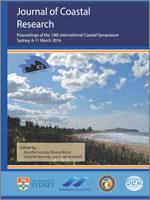FitzGerald, D.M., Georgiou, I., and Kulp, M., 2016. Restortation of the Chandeleur Barrier arc. Louisiana. In: Vila-Concejo, A.; Bruce, E.; Kennedy, D.M., and McCarroll, R.J. (eds.), Proceedings of the 14th International Coastal Symposium (Sydney, Australia). Journal of Coastal Research, Special Issue, No. 75, pp. 1282 - 1286. Coconut Creek (Florida), ISSN 0749-0208.
The north-south trending barrier arc of the Chandeleur Islands protects valuable wetlands and reduces hurricane impacts in southeastern Louisiana. Avulsion of the lower Mississippi River ~ 1500 ka led to reworking of the St. Bernard deltaic headland concentrating sand and producing the proto-Chandeleur Islands. During the same period, landward interior delta plain erosion and subsidence formed Chandeleur Sound. Since the 1980's, isolation from new sand sources, high rates of relative sea-level rise (5 mm/yr), and hurricane impacts have produced a low transgressive barrier, periodically breached by numerous hurricane passes. Much of the sand eroded during storms is transported laterally to the ends of the barrier arc and lost from the system. A sustainable restoration plan for the barrier chain involves massive sand nourishment (from Hewes Point and St Bernard shoals ~ 285 × 106 m3) while accommodating its natural landward migration. Sand would be placed along existing barrier segments to build beaches and foredune ridges. Additional sand would widen and elevate recurved spits at hurricane passes. Sand would also be pumped behind the barriers to create a broad intertidal and subtidal sand sheet would provide a platform for barrier migration during transgression. Foredune ridges, recurved spits, and intertidal rear platforms would be vegetated to help stabilize these sand deposits and provide integrity. Finally, 15 large subtidal troughs would be excavated perpendicular and landward of the barrier arc, each filled with a 106 m3 of sand. This plan emphasizes landward sand transport during storms and gradual reintroduction of sand during transgression.





